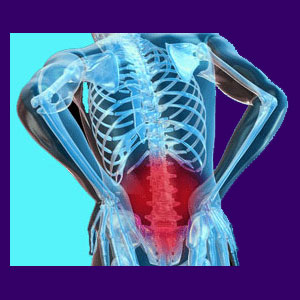
Flat feet back pain describes symptoms caused by fallen arches and excessive foot pronation due to compensatory mechanisms in the spine. There is growing interest in back pain and sciatica that is thought to be created from the ground up, rather than from the spine down, as is traditionally diagnosed. Many medical exponents of posture-related back pain now agree that flat feet can be a contributor to a range of dorsalgia conditions. However, the idea of flat feet causing back pain is far from universally accepted, with many spinal specialists doubting the legitimacy of the diagnosis in the majority of cases.
This article explores the possibility that flat feet can indeed create the ideal circumstances for back pain to occur. We will look at the possible mechanisms of action through which back pain may be related to fallen arches, as well as provide evidence that critics of this theory of foot pronation causation might also be right in their stance that flat feet might be completely incidental to the occurrence of back pain.
Flat Footed Back Pain Presentation
Flat feet back pain typically exists in the lumbar spinal region, the buttocks, the hips and into the legs. Sciatica symptoms are very commonplace in these patients. Middle, upper and neck pain is far rarer, but not unheard of, in select patient profiles.
A few patients might suffer pain all the time, but this presentation is rare and seemingly unscientific. Instead, most patients experience symptoms during particular postures or activities, such as when standing for an extended period of time, when walking, running or exercising. It would seem illogical from a diagnostic point of view for patients to express symptoms when sitting or reclining.
Pain is usually muscular in nature, although other types of expressions are certainly possible, given particular patient-specific circumstances that might dispose a person to a different type of pain.
Flat Feet Back Pain Mechanisms
Flat feet change the way to body aligns and interacts from the ground up. It is well known that flat feet cause similar anatomical changes to leg length differentials, including any of the following scenarios that might be considered contributory or even directly causative for back pain:
Altered stance and gait can cause changes in the spine as the vertebral column tries to maintain balance and symmetry in the anatomy. Common changes include pelvic tilting and changes in lumbar and even cervical lordosis. In some cases, these changes can contribute to neurological compression due to narrowed foraminal openings. These structural alterations also affect the musculature of the back, potentially contributing to imbalances and chronic tightness.
The sacroiliac joint is often affected by flat feet, potentially causing pain that feels as if it is actually originating in the lumbar spine. Sacroiliac pain is also a common consequence.
Piriformis syndrome may occur due to spasming in the piriformis muscle causing it to constrict the sciatic and/or pudendal nerves. This is one of the major causes of flat footed sciatica.
Flat Feet Back Pain Critics
Many doctors cite universally proven evidence that the body is quite adept at compensating for anatomical irregularity. This is the same evidence that has been used to clear most spinal abnormalities of blame when it comes to creating back pain, as well. The idea here is that yes, changes in the feet can certainly affect the structure and functionality of the upper regions of the body. However, the body is capable of making adjustments that should prevent pathology in virtually all cases. This is a very convincing argument, since it is based on solid research science, as well as the clinical experiences of countless medical providers over very, very long timelines.
We tend to take the middle ground here, as we do in many medical debates. We have personally seen cases where flat footedness has certainly influenced the development of back pain and sciatica. The proof lies in permanent resolution of the symptomology with appropriate action to rectify the flat feet condition. However, we see vast numbers of patients who have been told that their pain is a direct result of very minor fallen arch conditions, when no evidence of such a relationship can be established. In virtually all of these cases, the diagnosis of flat feet back pain is a revision to previous diagnostic therapies which also turned out to be incorrect. What makes these patients think the doctor has the situation evaluated correctly this time?
Be careful what you believe and always seek out scientific evidence of the objective accuracy any diagnostic verdict. This certainly includes flat footed back pain syndromes, since many are misdiagnosed and therefore cause the patient to waste time, energy, hope and lots of money pursuing care for what amounts of be yet another incidental condition, rather than the actual cause of their torment.





